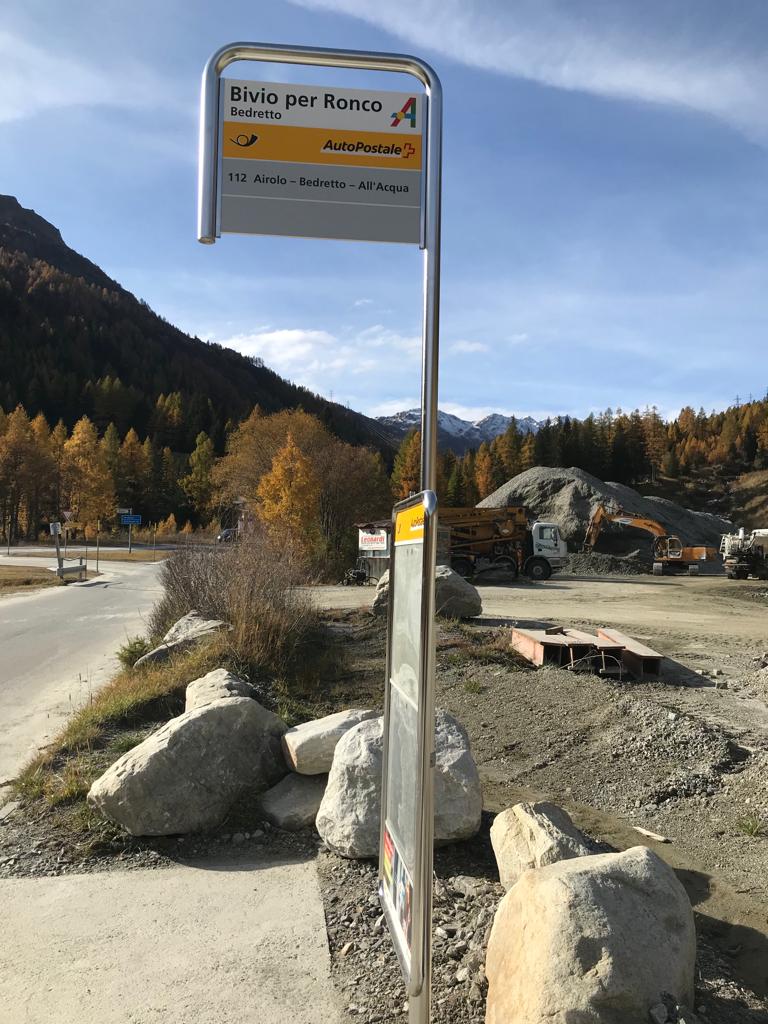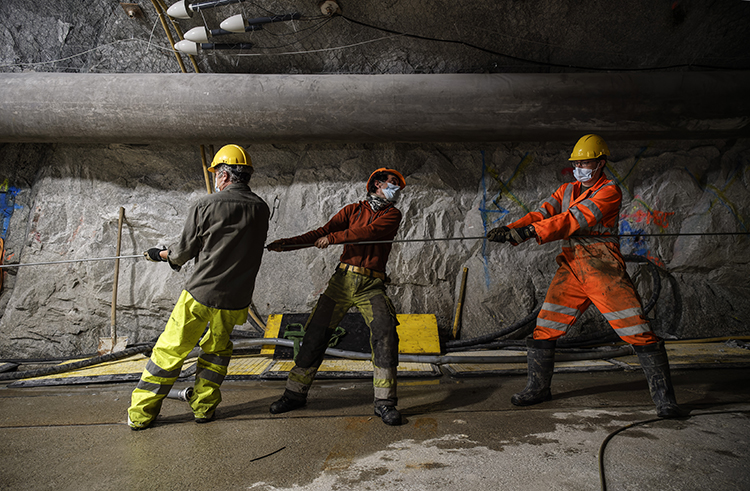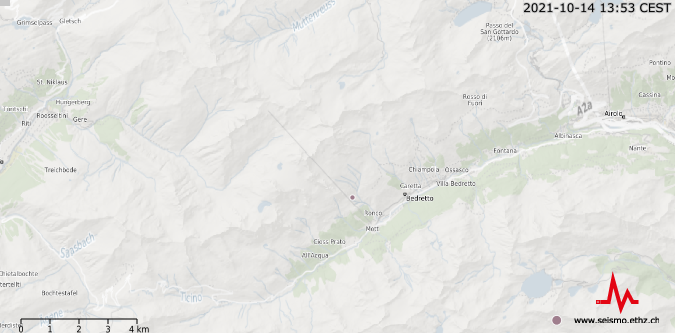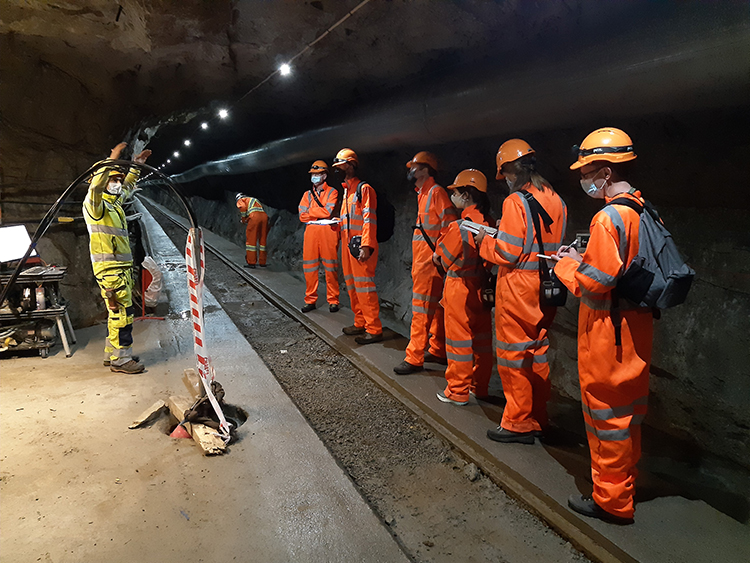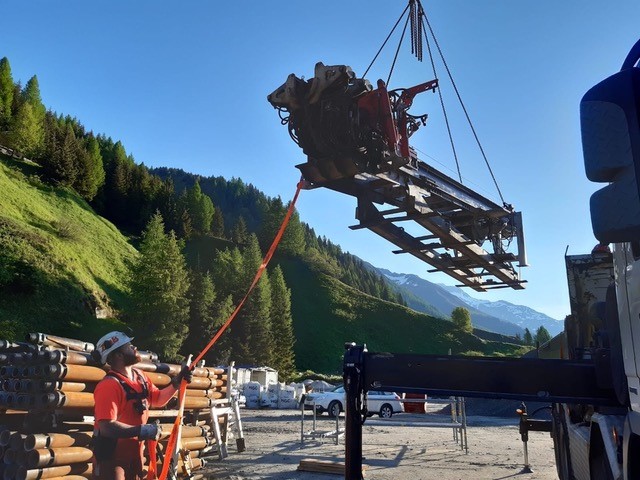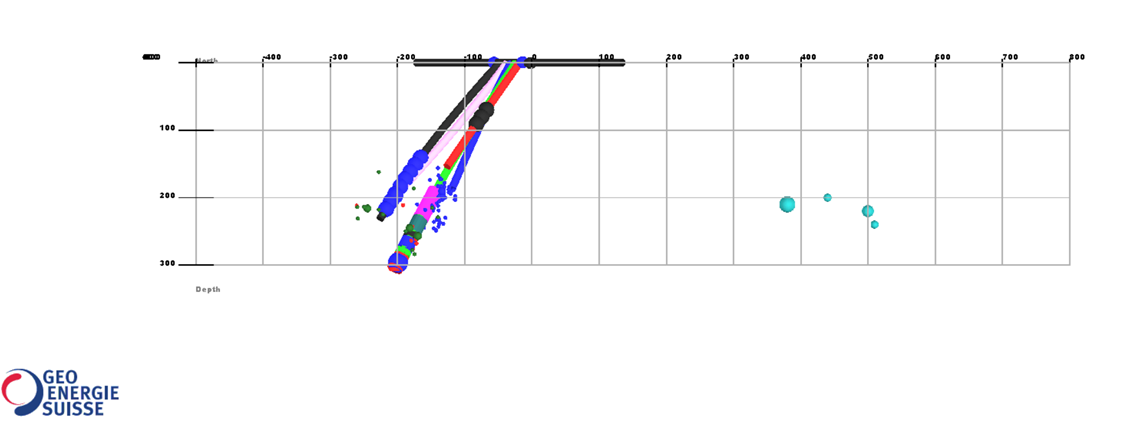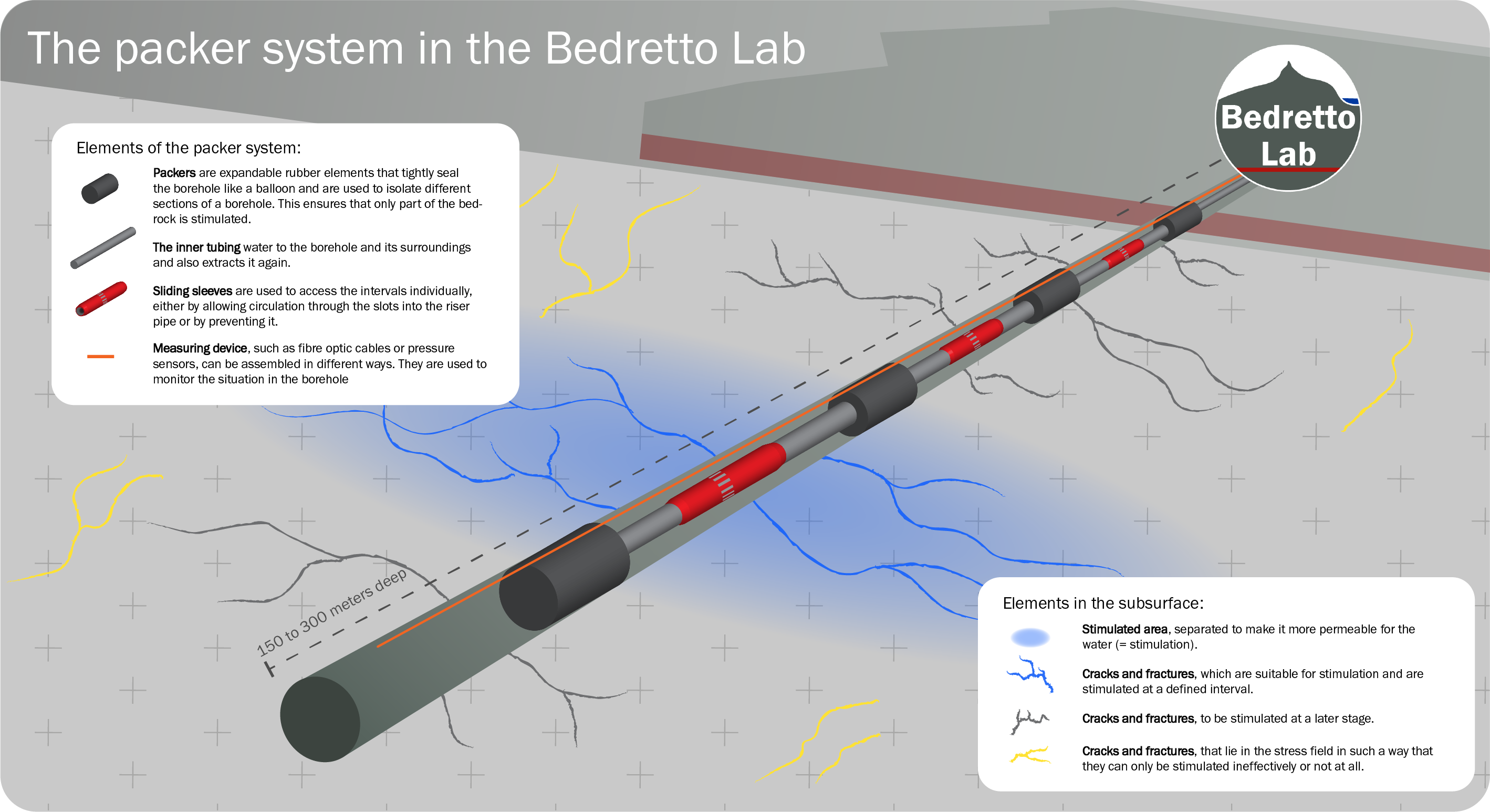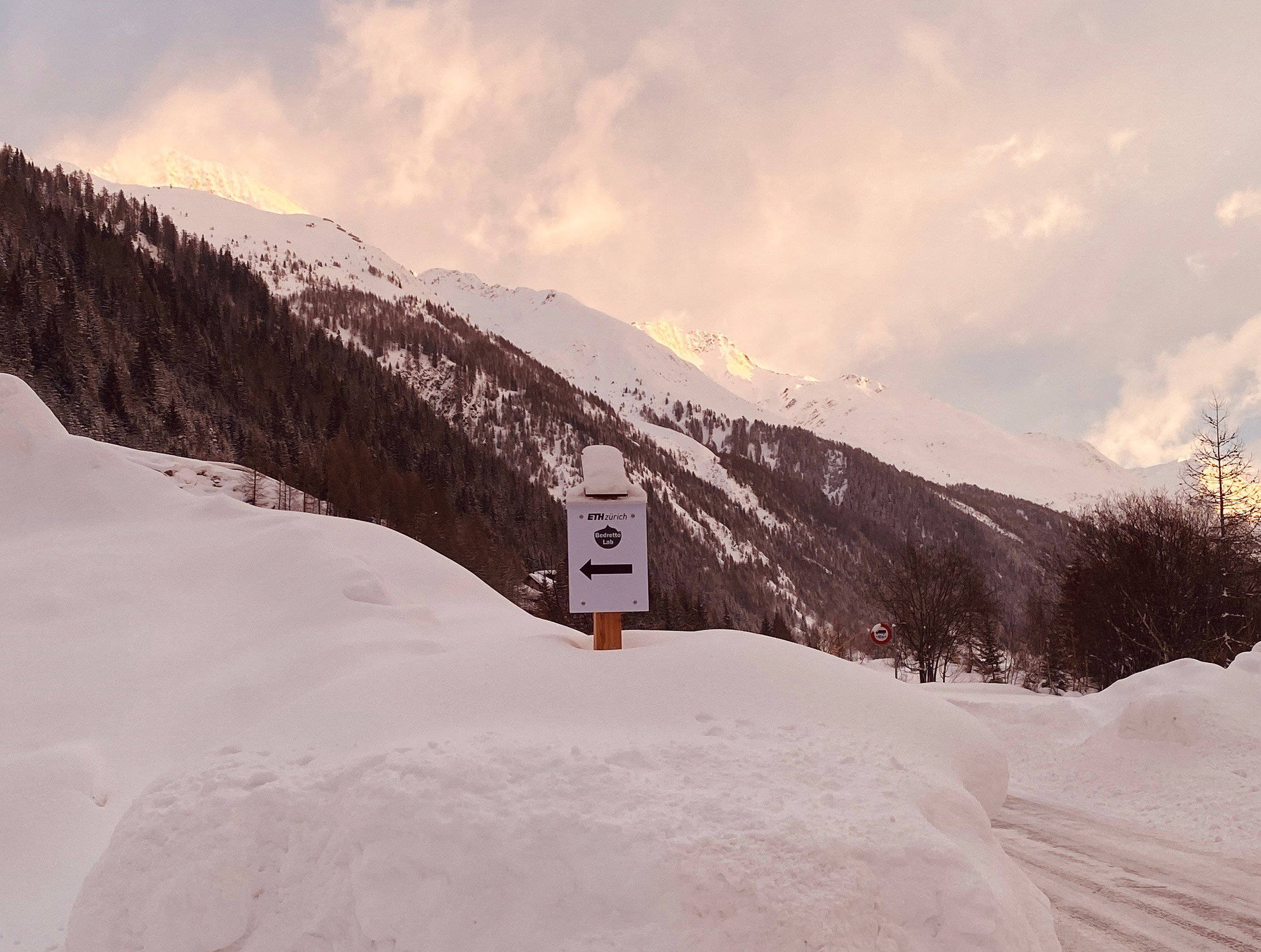2021-10-14
The BedrettoLab enters a new phase
In 2019, the Bedretto tunnel was identified as an ideal place to establish a deep underground laboratory. Shortly after, an agreement with the tunnel owner, the Matterhorn-Gotthard-Bahn, was signed and the preparatory work begun. The tunnel needed to be secured and the infrastructure was installed in the main cavern 2 km deep into the tunnel, to enable conducting outstanding scientific experiments. To gain a better understating of the rock properties, a geological characterization phase took place. At the same time, we tested equipment and the instruments, many of them newly developed for our specific purposes. Finally, a first experimental testbed has been set up, by drilling ten 250 to 400 m long boreholes below the main cavern and equipping them with hundreds of sensors, effectively transforming a large volume of rock in a unique sensing testbed.
Following this extensive preparatory work, the BedrettoLab is now ready for the next phase, where we really want to get to the bottom of things. The three experimental projects FEAR (Fault Activation and Earthquake Rupture, an EU ERC Synergy Project), MISS (Mitigating Induced Seismicity for Successful Geo-Resources Applications, financed by the Werner Siemens Foundation), and VALTER (VALidating of TEchnologies for Reservoir Engineering, financed by the Swiss Federal Office of Energy) are of particular importance for this phase.
Whereas VALTER focuses on different aspects of building and operating a geothermal reservoir in a safe and efficient way, MISS and FEAR are interested in fundamental earthquake processes – how earthquakes start and stop, how faults slip – and use for this purpose the tiny earthquakes induced by water injections as well as fault stimulations. The installation of a second testbed to host the FEAR and MISS experiments is now starting. For this purpose, the BedrettoLab will be extended by retrofitting additional caverns deeper in the tunnel to double the rock volumes available for experiments. Further, an additional side-tunnel of about 100 m length is planned, making it possible to monitor the target fault at close distance and add new monitoring boreholes equipped with hundreds of sensors. Outside the tunnel, this work will not be noticeable. However, the excavated material is high-quality Granite and will thus be transported from the site for further use. Theses extensions are planned to be completed by summer 2022.
2021-10-14
Earthquake monitoring at the BedrettoLab now online
We have added a new feature to the BedrettoLab website: a publicly available list, which shows all detected earthquakes that were registered in the wider Bedretto area and the Lab itself. It contains all earthquakes, natural or induced, that have been detected since 01.01.2019 by the national seismic network operated by the Swiss Seismological Service at ETH Zurich. You can find it here. Additionally, you can find here more information about the monitoring network.
2021-10-06
Media event about the start of the VALTER project stimulations
On 28 September, we invited the press to the BedrettoLab, because the stimulations within the VALTER project are about to start.
The Validating of Technologies for Reservoir Engineering (VALTER) experiment, funded by the Swiss Federal Office of Energy, tests in unprecedented detail on a realistic scale of several hundred metres innovative technologies and processes to create a commercially viable underground heat exchanger while minimising the risk of major earthquakes.
The media reports from this (and earlier events) are listed here.
2021-08-02
First newsletter issue
We have published the first issue of the BedrettoLab newsletter. In this issue, you will take a glimpse into the deep underground, learn more about the Bedretto Reservoir Project and discover how we collect data at the BedrettoLab.
Curious? You can read, download and sign up for the newsletter here.
2021-06-11
Borehole drilling completed
After almost two years of intense work to build the stimulation and monitoring boreholes, the drilling campaign has been finished last week by cementing a steel-casing in ST2. By now, nine boreholes with a total length of some 2’500 meters drilled have been completed - an impressive achievement!
For the drilling in Bedretto a completely new drill-rig has been engineered and was transported brand-new on-site in 2020. Now, after successful completion the drill-rig and its equipment were dismantled, moved out of the tunnel and are now being returned to the drilling company's warehouse.
Currently, the new boreholes are being prepared for the instrumentation, which will start in July 2021.
2021-05-07
Detective work on earthquakes - with updates
As part of the ongoing Bedretto Reservoir Project, high-resolution seismic networks have been installed along the Bedretto main tunnel and in dedicated boreholes to monitor the behaviour of the rock volume and the possible occurrence of seismicity.
The water injections performed in the past two weeks by Geo Energie Suisse (GES) induced numerous very small earthquakes in the vicinity of the borehole – an expected and desired effect of the stimulations. The last stimulation activities took place three days ago, and the induced seismicity near the injection borehole has since decreased and ceased.
The seismic network allows to detect events in the whole tunnel area, and on the night of 6 May 2021, a couple of events have been registered at about 500 meters away from the injection area, in the direction of the entrance of the Bedretto tunnel. The largest event had a magnitude of +0.1, according to the Swiss Seismological Service at ETH Zurich. Therewith, this event is considerably lower than the magnitude threshold above which people can usually notice an earthquake. Only the very dense seismic monitoring system made it possible to record and locate such small events. A full analysis of the data recorded over the past weeks enabled us to detect so far nine events with magnitudes down to ML= -1.8, some of which occurring already several months before the start of the water injections.
Although these events are too small to raise any immediate safety concerns, they provide a unique possibility to understand how pressure perturbations connected to activities in the reservoir and to water flow propagate through the rock volume. The BedrettoLab team has initiated a range of investigations to gain a better understanding of the causes of these unusual events and will use this new knowledge to steer future stimulation activities. 7 May 2021
Update 12 May 2021: Detective work continues
The Bedretto team continues to investigate the micro-earthquakes observed first on May 6th. In the past five days, three events with a maximum magnitude of -0.5 were observed, plus one event at more than 1 km from the tunnel. Using additional reprocessing steps, the team was able to reconstruct the timeline of the earthquakes of the past two years in more detail. Seismologists use an approach called “template matching”: Once a signal is known, they can scan past data for similar patterns that could not be detected before. This analysis revealed that another seismicity episode occurred unknown to the Bedretto team in October 2020 a few hundred meters further into the tunnel as compared to the May 6th events, with a maximum magnitude of about 0.2. However, as early as March 2020, another episode of very small events of magnitude -1.5 and smaller was detected.
So far, the events in March and October 2020 seem to have no obvious connection to drilling or stimulation activities in the Lab. The events in October followed within a few days of extreme rainfall at Bedretto, so it is possible that the seismicity is related to changes in pore pressures induced by rainfall, but other sequences do not so clearly correlate. Rain induced earthquakes have been observed in other parts of Switzerland (see for example here), mainly in Karst areas where water from the surface can quickly reach seismogenic depths of 1 kilometre or more.
The detective work therefore continues: The Bedretto team is installing additional seismic stations, gathering fluid samples and is re-analysing data, and they are considering hydro-mechanic models to build plausible models for the micro-earthquakes. At the same time, activities in the tunnel continue with microdrilling, notching and stress measurements in one of the long boreholes; activities that do not result in any micro-seismicity. Injections are not planned for the next days.
Update 27 May 2021: Clues found, investigations continue
The detective work on the cause of the observed micro-earthquakes has produced some clues, but further analysis is necessary to better understand the seismicity around the BedrettoLab.
One of the clues is that much of the observed seismicity occurred during a period of heavy rainfalls in the Bedretto region. Rainfall-driven microearthquake triggering is a plausible but somewhat debated scientific hypothesis, and our observations form an interesting test case for the theory. We are currently collecting regional precipitation and meltwater data, to do an in-depth study, with recently developed microearthquake detection algorithms.
Another clue is that microearthquake sequences are not at all uncommon in underground operations such as the ones performed in the BedrettoLab. Activities like drilling and tunnelling can change crustal stresses and pore pressures in the host rock, even at some distance from the tunnel itself. Such perturbations are also likely candidates to drive the observed microquake activity.
The Bedretto team is currently expanding the seismic monitoring network in order to be able to better characterize the microseismic events, not just in the immediate vicinity of the laboratory, but also across a larger region around it.
The reservoir stimulation activities are completed for the moment, which will allow the reservoir system to equilibrate. With the expanded monitoring network, we will be able to even better study the microseismic activity and hunt for further clues. With the additional knowledge about the background seismicity in Bedretto, the team is preparing next stimulations starting in autumn.
2021-04-29
April 2021 - Second stimulation of the DESTRESS project
After first stimulations in November 2020, in the next days, Geo-Energie Suisse (GES) will perform another set of high-pressure injections at the BedrettoLab using a multi-packer-system. Packers are large rubber sleeves that are lowered into the borehole to divide it into several sections. They allow to stimulate the different sections separately with exactly the pressure and the amount of water needed. This method aims at enhancing the permeability per section in a controlled way while minimizing induced seismicity. GES conducts the so far largest stimulation test at BedrettoLab as part of the DESTRESS project.
For these stimulation tests, GES will use a set of 14 packers (see illustration showing the concept) that are mounted at fixed intervals of 12 to 25 meters. This means, that a larger rock volume will be stimulated than in November, when the packers were installed at narrower intervals. The packers are placed at depths of about 250 to 400 meters in the borehole ST1, whereby only the lowest sections will be stimulated. The goal is to observe how the packer system behaves as a whole and if the packers succeed in separating the sections allowing targeted stimulations.
As for all activities in the BedrettoLab, safety is the top priority also for these stimulations. For this reason, GES and ETH Zurich closely monitors the preparation and implementation of the stimulations. The chances are very small that these stimulations will cause damage to the tunnel (a probability of less than 1 in 10’000) and even smaller that they will cause earthquakes large enough to be felt or cause damage in nearby villages (a probability of less than 1 in 10 million).

